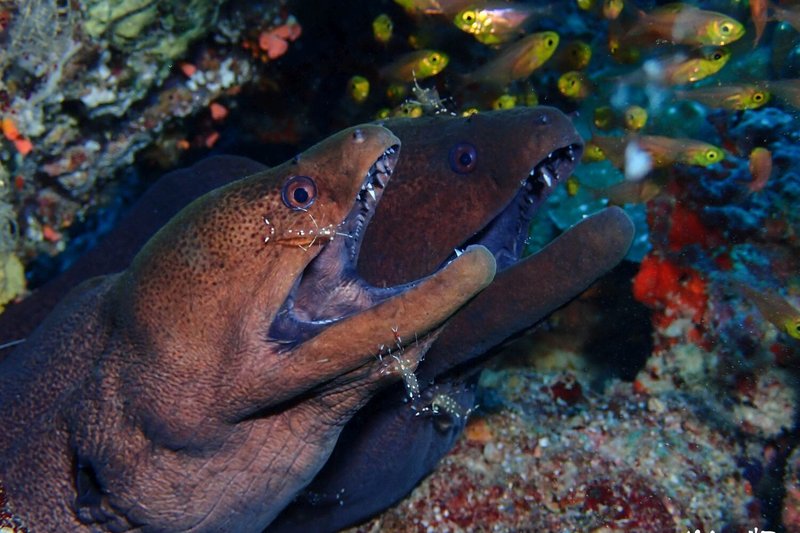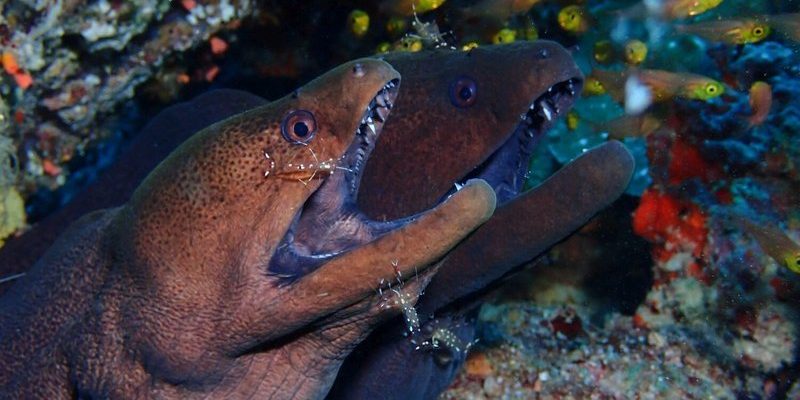
In this article, we’re going to dive into the main challenges these eels encounter. From habitat loss to pollution, each threat plays a role in how these unique fish survive. Think of it like peeling back the layers of an onion; as we explore each issue, you’ll see just how interconnected their world is. So, grab a coffee, sit back, and let’s explore what’s putting the moray eel at risk.
1. Habitat Destruction
One of the biggest challenges for moray eels is habitat destruction. These eels love rocky crevices and coral reefs where they can hide and hunt. Unfortunately, coastal development is tearing away these crucial habitats. Imagine building a house on a beautiful beach and not thinking about the wildlife living there. That’s what’s happening in many areas.
Coral reefs, specifically, are declining due to climate change, pollution, and overfishing. When reefs are damaged, the delicate balance of the entire ecosystem is thrown off. Moray eels rely on healthy reefs not just for shelter but also for food. Without these habitats, their populations can’t thrive.
Moreover, activities like dredging for sand and expanding coastal cities can bury the habitats that moray eels depend on. It’s like trying to find a cozy spot to nap in a noisy, crowded room—pretty difficult, right?
2. Overfishing
Overfishing is another significant concern for moray eels. While these eels aren’t typically the target of fishing, they often become unintended victims. Fishermen use methods that catch not just the intended species but also a wide range of marine life, including moray eels.
Consider this: when nets are cast, they don’t discriminate. Many innocent creatures end up trapped alongside the desired catch. Even when moray eels are caught intentionally, it can disrupt their natural population. When their numbers dwindle, it affects the entire food web, as these eels play a crucial role in maintaining the balance of the ecosystem.
Additionally, as fish stocks decline, competition for food increases. Moray eels might find it harder to hunt and survive, leading to decreased populations over time. It’s a tough cycle that can have long-lasting impacts on their survival.
3. Pollution
Pollution is like that unwanted party crasher that shows up and ruins everything. It affects not just the beauty of the ocean but also the health of its inhabitants. For moray eels, this means dealing with contaminated waters that can lead to serious health issues.
Chemicals, plastics, and waste make their way into the ocean and can accumulate in the bodies of marine life. When moray eels consume contaminated fish, the toxins build up inside them. This can hinder their ability to reproduce, grow, and fend off diseases.
Moreover, pollution can lead to algal blooms that suffocate coral reefs, reducing the very habitats moray eels depend on. Imagine trying to breathe in a crowded, smoky room—perilous, right? That’s what these eels experience in polluted waters.
4. Climate Change
Climate change is a game-changer for many marine species, including moray eels. Rising ocean temperatures can lead to coral bleaching, which weakens reefs and can even kill them. Without these structures, moray eels lose their homes and hunting grounds.
Furthermore, as ocean temperatures rise, we may see shifts in the distribution of marine species. This means that if moray eels can’t adapt to changing conditions or move to new locations, their survival could be at stake.
In some areas, sea level rise poses another risk. Coastal habitats can become submerged, altering the landscape that moray eels rely on. Picture your favorite café disappearing under the ocean; it would be a loss not just for you but for everyone who enjoyed it. The same goes for moray eels and their habitat.
5. Invasive Species
Invasive species are like uninvited guests at a party—they disrupt the flow and can cause chaos. In the ocean, species that don’t naturally belong can outcompete native species for food and resources. For moray eels, this means facing increased competition from aggressive invaders.
For instance, lionfish, which are not native to many parts of the Atlantic, have become a significant problem. Their rapid reproduction and voracious appetites allow them to dominate local ecosystems. This can lead to a decline in fish populations that moray eels typically rely on for food.
Invasive species can also introduce new diseases or parasites that native species aren’t equipped to handle. So, if a moray eel encounters an invasive species, it could become sick or worse. It’s a tough situation where the balance of nature is disrupted, making survival for moray eels even more challenging.
6. Human Interaction
While not everyone thinks of moray eels as cuddly creatures, human interaction can pose unexpected threats. People often fear eels because of their appearance and might not realize that they’re not aggressive unless provoked.
However, reckless behavior, such as touching or harassing moray eels in their natural habitat, can lead to stress or injury for these animals. Imagine being poked and prodded in your home—it wouldn’t feel great, right?
Moreover, if people start targeting moray eels for the aquarium trade, it can further threaten their populations in the wild. Collecting these fish is often done unsustainably, leading to declines in local populations. Each of these actions can add up, leaving moray eels more vulnerable than ever.
7. Conservation Efforts
Even with all these challenges, there is hope. Conservation efforts are vital for protecting moray eels and their habitats. Programs focused on marine protected areas (MPAs) provide safe zones where these eels can thrive without the pressures of fishing or habitat destruction.
Raising awareness about the issues moray eels face is equally crucial. Educating people about sustainable fishing practices and the impact of pollution can lead to better stewardship of our oceans. Everyone can play a role, whether it’s through advocacy, responsible tourism, or simply enjoying the ocean in ways that don’t harm its inhabitants.
Additionally, supporting clean-up efforts and conservation organizations can contribute to healthier marine ecosystems. When we work together, we can make a difference for moray eels and many other species.
In conclusion, the moray eel may be a fascinating creature of the ocean, but it’s threatened by many factors. By understanding these challenges and taking action, we can help ensure that future generations get to marvel at these unique fish in their natural habitat.

